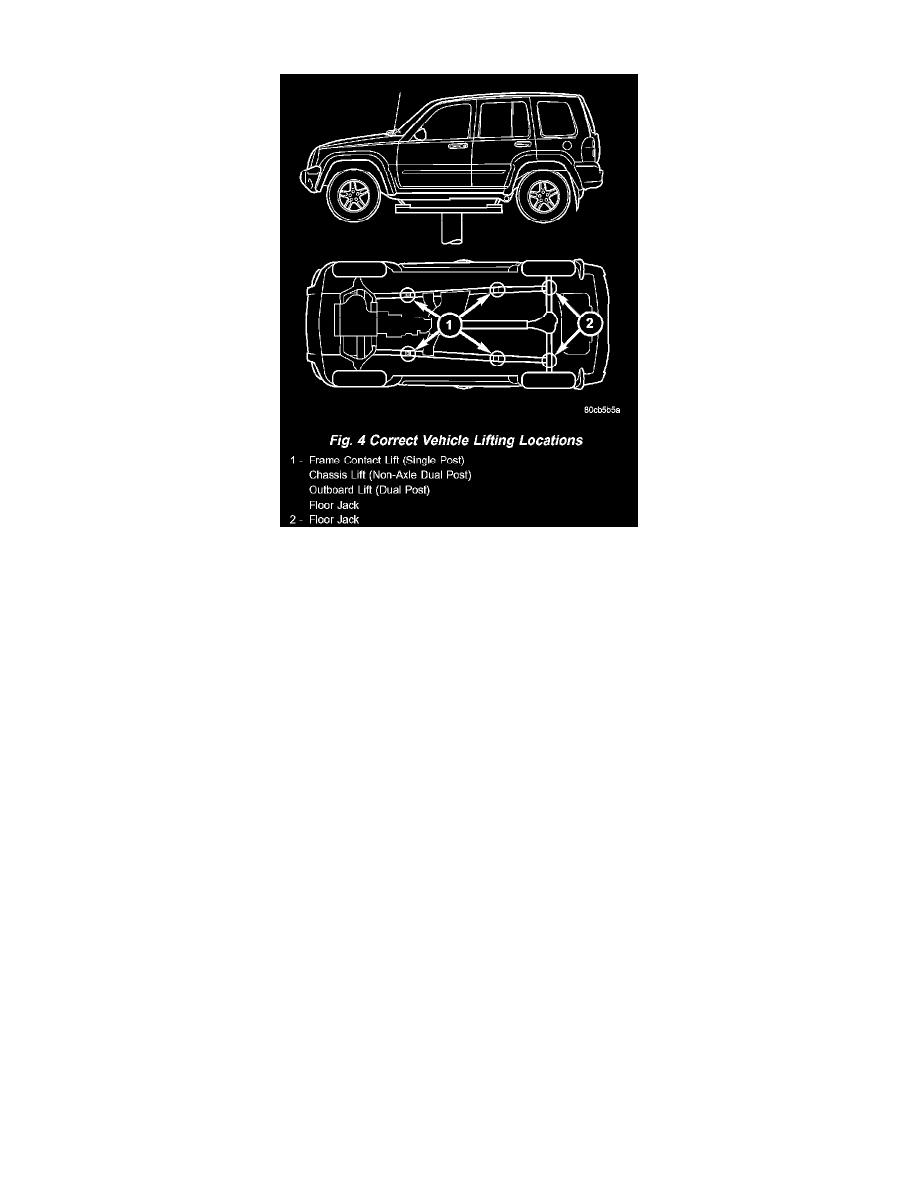Liberty Sport 2WD L4-2.4L VIN 1 (2002)

Vehicle Lifting: Service and Repair
Fig.4 Correct Vehicle Lifting Locations
STANDARD PROCEDURE - HOISTING RECOMMENDATIONS
Refer to the Owner's Manual for emergency vehicle lifting procedures.
When properly positioned, a floor jack can be used to lift a Jeep vehicle (Fig. 4). Support the vehicle in the raised position with jack stands at the front
and rear ends of the frame rails.
CAUTION: Do not attempt to lift a Jeep vehicle with a floor jack positioned under:
-
A body side sill.
-
A steering linkage component.
-
A drive shaft.
-
The engine or transmission oil pan.
-
The fuel tank.
-
A front suspension arm.
-
Transfer case.
NOTE: Use the correct sub-frame rail or frame rail lifting locations only.
Hoist
Refer to the Owner's Manual for emergency vehicle lifting procedures.
-
A vehicle can be lifted with:
-
A single-post, frame-contact hoist.
-
A twin-post, chassis hoist.
-
A ramp-type, drive-on hoist.
NOTE: When a frame-contact type hoist is used, verify that the lifting pads are positioned properly.
WARNING: THE HOISTING AND JACK LIFTING POINTS PROVIDED ARE FOR A COMPLETE VEHICLE. WHEN A CHASSIS OR
DRIVETRAIN COMPONENT IS REMOVED FROM A VEHICLE, THE CENTER OF GRAVITY IS ALTERED MAKING SOME
HOISTING CONDITIONS UNSTABLE. PROPERLY SUPPORT OR SECURE VEHICLE TO HOISTING DEVICE WHEN THESE
CONDITIONS EXIST.
